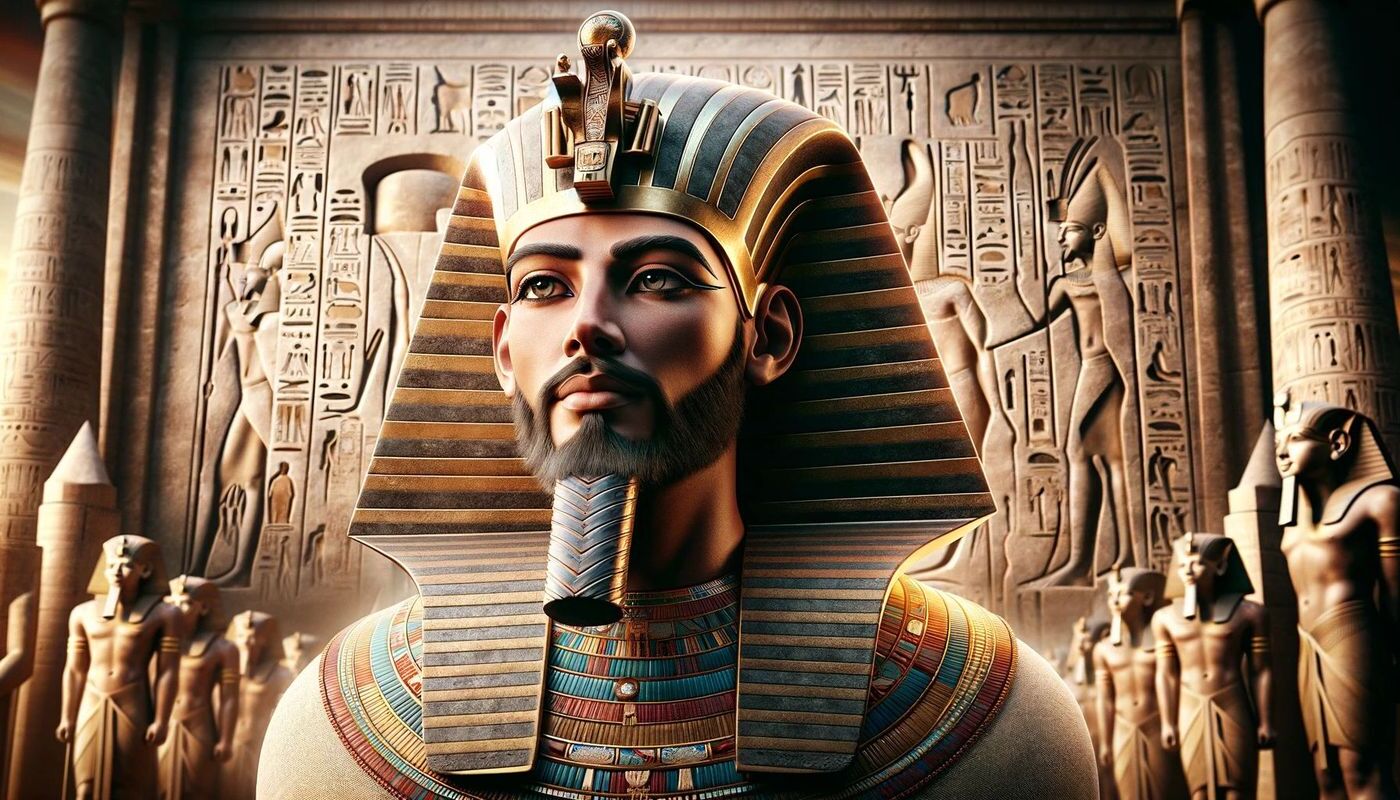
Ramesses II, one of ancient Egypt's most famous pharaohs, is celebrated for his military genius and monumental building projects. Among his many military endeavors, his campaigns against the Libyans stand out as crucial for securing Egypt's western borders. Why were Ramesses II's Libyan campaigns so significant? These campaigns not only showcased his strategic brilliance but also ensured the safety and stability of Egypt's Mediterranean coast. From early military training with his father, Seti I, to decisive victories over the Sherden sea pirates, Ramesses II's efforts in Libya were pivotal. His actions fortified Egypt's influence, integrated skilled warriors into his army, and maintained control over vital trade routes.
Key Takeaways:
- Ramesses II's military campaigns against the Libyans and Sherden pirates secured Egypt's borders and trade routes, showcasing his strategic genius and naval warfare skills.
- Beyond his military prowess, Ramesses II's reign was marked by diplomatic successes, cultural flourishing, and impressive architectural achievements, leaving a lasting legacy in ancient Egypt.
Early Military Training and Succession
Ramesses II, one of Egypt's most famous pharaohs, was known for his military skills and grand building projects. His campaigns against the Libyans were crucial for securing Egypt's borders and maintaining its influence. Let's dive into some fascinating facts about these campaigns.
-
Early Military Training: Ramesses II began his military training at a young age, joining his father, Seti I, on campaigns in Libya and Palestine when he was just 14 years old.
-
Succession and Early Campaigns: By 22, Ramesses II was leading his own military campaigns in Nubia, with his sons Khaemweset and Amunhirwenemef by his side. He was also named co-ruler with Seti I.
Libyan Campaigns and Strategies
Ramesses II's campaigns against the Libyans were a testament to his strategic genius. These campaigns were vital for maintaining Egypt's security and control over the Mediterranean coast.
-
Libyan Campaigns: Ramesses II conducted multiple military expeditions against the Libyans, who posed a recurrent threat to Egypt's western borders.
-
Seti I's Legacy: Some records of Ramesses II's Libyan campaigns might refer to events unrecorded by his father, Seti I, who had achieved control over the region.
-
Fortress Construction: Remains of fortresses built on Libyan land along a 300-kilometer stretch of the Mediterranean coast indicate some degree of political and military control over the region.
-
Aswan Stele: The Aswan Stele from Ramesses II's year 2 provides generalized records of his conquering and crushing the Libyans, though the exact events are unclear.
Battle Tactics and Naval Warfare
Ramesses II's military strategies were not just about land battles. He also excelled in naval warfare, particularly against the Sherden sea pirates.
-
Military Strategy: Ramesses II posted troops and ships at strategic points along the coast, allowing pirates to attack their perceived prey before catching them by surprise in a sea battle.
-
Sherden Sea Pirates: In his second year, Ramesses II decisively defeated the Sherden sea pirates who were wreaking havoc along Egypt's Mediterranean coast.
-
Battle Tactics: The stele from Tanis describes the Sherden pirates as having come "in their war-ships from the midst of the sea, and none were able to stand before them."
-
Naval Battle: The naval battle against the Sherden pirates likely took place near the mouth of the Nile, securing Egypt's coastal trade routes.
-
Integration of Prisoners: After defeating the Sherden pirates, Ramesses II integrated many of the prisoners into his army, serving as elite bodyguards.
The Battle of Kadesh and Hittite Relations
The Battle of Kadesh is one of the most famous battles in ancient history. It also involved the Sherden pirates and had significant implications for Egypt's relations with the Hittites.
-
Battle of Kadesh: Although primarily known for its conflict with the Hittites, the Battle of Kadesh also involved the Sherden pirates.
-
Hittite Relations: The relationship between Egypt and the Hittites was complex during Ramesses II's reign. The Hittites controlled several important trading centers in Syria and Canaan.
-
Suppiluliuma I: Under the Hittite king Suppiluliuma I, Egypt had lost many important trading centers. Seti I had recaptured Kadesh in Syria but it was later taken back by Muwatalli II.
Restoration Projects and Nubian Campaigns
Ramesses II was not just focused on the Libyans and Hittites. He also led campaigns in Nubia and undertook significant restoration projects.
-
Restoration Projects: After assuming the throne, Ramesses II began military campaigns aimed at restoring Egypt's borders, ensuring trade routes, and reclaiming territories lost to the Hittites.
-
Nubian Campaigns: Ramesses II also campaigned in Nubia, where he was accompanied by his sons. These campaigns solidified Egypt's control over this region.
-
Temple Decorations: Temples built by Ramesses II in Nubia, such as those at Beit el-Wali, Gerf Hussein, and Kalabsha, feature detailed decorations highlighting his military victories.
-
Family Involvement: Ramesses II's sons, including Amun-her-khepeshef and Khaemweset, played significant roles in his military campaigns.
Military Strength and Architectural Achievements
Ramesses II's reign was marked by a strong military presence and impressive architectural achievements.
-
Military Strength: The Egyptian army during Ramesses II's reign was estimated to have totaled around 100,000 men, making it a formidable force.
-
Libyan Revolts: Ramesses II was responsible for suppressing Nubian revolts and maintaining control over Egypt's western borders.
-
Architectural Achievements: While his military campaigns were crucial, Ramesses II also focused on building monumental temples and tombs, including the Ramesseum and the Temple of Abu Simbel.
Diplomatic Successes and Cultural Flourishing
Ramesses II's reign was not just about war. He also achieved significant diplomatic successes and cultural advancements.
-
Peace Treaty with Hittites: The Battle of Kadesh led to a peace treaty with King Hattusil, considered the world's first peace treaty.
-
Marriage to Hattusil's Daughter: To strengthen this peace treaty, Ramesses II married Mathorneferure, the daughter of King Hattusil.
-
Cultural and Religious Practices: Under Ramesses II's rule, various cultural and religious practices flourished, particularly the worship of Amun-Ra.
-
Legacy: Ramesses II's reign is remembered for its military victories, architectural achievements, and diplomatic successes. His legacy extends beyond his own time, influencing subsequent pharaohs and shaping Egypt's place in the ancient world.
Ramesses II's Enduring Legacy
Ramesses II's Libyan campaigns were more than just military maneuvers; they were a testament to his strategic brilliance and determination to secure Egypt's borders. From his early training with Seti I to his decisive victories over the Sherden sea pirates, Ramesses II showcased his ability to protect and expand his empire. His construction of fortresses along the Mediterranean coast and integration of captured warriors into his army further solidified his control. Beyond the battlefield, his diplomatic efforts, like the peace treaty with the Hittites, highlighted his skill in maintaining stability. Ramesses II's reign left an indelible mark on Egypt, blending military might with architectural grandeur. His campaigns against the Libyans, along with his broader military and diplomatic achievements, ensured Egypt's prominence in the ancient world. His legacy continues to inspire and captivate historians and enthusiasts alike.
Frequently Asked Questions
Was this page helpful?
Our commitment to delivering trustworthy and engaging content is at the heart of what we do. Each fact on our site is contributed by real users like you, bringing a wealth of diverse insights and information. To ensure the highest standards of accuracy and reliability, our dedicated editors meticulously review each submission. This process guarantees that the facts we share are not only fascinating but also credible. Trust in our commitment to quality and authenticity as you explore and learn with us.


